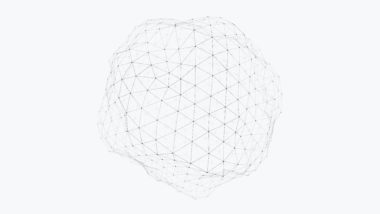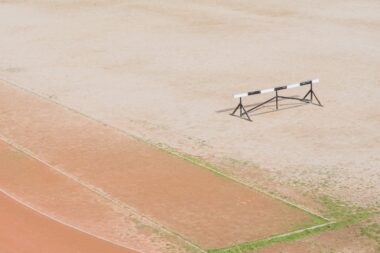Author: Markus Peschl and Oliver Lukitsch
List of Guiding Principle Articles
- Prelude: What Organizations Have in Common With Living Systems
- Principle #1: Radical Openness
- Principle #2: Sensing the Core
- Principle #3: Identifying and Bringing to Life Latent Potentials
- Principle #4: Designing and Co-creating
- Principle #5: Emergence
- Principle #6: Enabling
- Principle #7: Learning from the Future as it Emerges
This is a blog post in a series of articles about our guiding principles. We continually revisit these principles, apply them to ourselves and other organizations in their pursuit of profound innovation and change. This time, we’re taking a look at a notion we consider essential for understanding how novelty comes into the world: the concept of “emergence”
Where does novelty come from?
Time and time again, others and ourselves showed that genuine novelty is essential for truly radical innovation. If it is to be radical, innovation cannot be derived from what is already known today. Rather, it must be based on new knowledge – knowledge that is not there yet, but which we bring into existence through the process of innovation. As innovation, however, is not extrapolated from existing knowledge, we cannot simply derive novel knowledge from it in a mechanistic or rule-based manner. Although in some cases, new knowledge might result from the combination or re-configuration of already existing knowledge, the challenge we are facing remains: Where does (radical) novelty come from? What is the source of novelty?
The answer we are proposing is that (radically) new knowledge emerges in the process of knowledge creation.
The concept of “emergence” means that a system features qualities that are not present in its individual components. A classic example is so-called swarm behavior in which a flock of animals (think of a large group of birds or fish) exhibit collective behavior. The interesting point is that if one looks at the system as a whole (i.e., the whole flock of animals), it shows collective qualities that cannot be found in the individuals. Furthermore, there is no central coordinating unit controlling this collective and sometimes rather complex behavior(s); it emerges from the interaction of the participating animals following their local rules. In this sense, collective behavior can be considered as a(n emergent) novel quality that was not present in the individual.
Such (complex) features cannot be predicted by paying attention to their fundamental parts. In isolation, we might be able to anticipate how the individual parts (i.e. the individual animal) behave, but in doing so, we cannot arrive at the “bigger picture”.
True novelty emerges
Our approach to innovation, which we refer to as Emergent Innovation/Leap, is based on the idea that radically novel knowledge has to be understood as an emergent quality. What does that imply, if we take a closer look at an organization striving for creating new knowledge to foster innovation? Assuming a systems perspective, an organization has to be considered as (i) a social system of cognitive systems/actors interacting with each other and (ii) the whole organization (more specifically, their members) interacting with its/their external environment (be it its users, social systems, cultural values or norms, the market, novel technologies, competitors, etc.). Taking into account what has been said above about emergent properties, we are dealing here with at least two intertwined domains where novelty might emerge:
- As we have seen in our example of flocking behaviors, the interaction of agents in an organization may lead to completely new knowledge and insights that have not been present in the individuals. Novelty arises as a result of social interaction (e.g., in innovation teams).
- A second source of novelty, that we consider equally important, is the environment itself. More specifically, the interaction of the organization (and its agents) with the latent potentials unfolding in the environment.
In our Emergent Innovation approach, both elements (and their interaction) are essential for the emergence of true novelty. It is a genuinely emergent process since neither the activities of individuals (as individuals) nor the dynamics of the environment by itself bring about this novelty. The outcome cannot be predicted in a deterministic manner, as it is an emergent result of well-orchestrated interactions of the involved parts of the system.
Ex nihilo — Novelty out of nowhere?
Still, the reader might wonder whether new, emergent knowledge is something that we can aim at if it is utterly unpredictable? It almost seems to come “out of nowhere”. How can we arrive at something desirable (e.g., products, services that people will need)? We answer these questions in the following way: New, emergent qualities that arise in knowledge creation processes are not fully detached from what is already there.
(1) They emerge from an intense interaction and deep engagement with the object or subject matter of innovation. Hence, the new, emergent knowledge that arises from such (knowledge and innovation) processes is an expression of a deep and profound understanding and exploration of the subject matter and its (future) potentials. The interactions that enable the emergence of new knowledge are themselves highly skillful activities that embody great expertise about the object of innovation.
(2) At the same time, the emergence of new knowledge requires that we suspend or “put on hold” our predefined patterns of perception and thinking.
Combined, this allows that the core of an object of innovation is both deeply respected, yet developed and changed at the same time. Just think about the first iPod. It respected pre-existing habits and ways of consuming music and our desire for a mobile experience, yet it reinvented the way we listen by radically simplifying the experience to its core while embedding it into a broader digital platform (iTunes).
For this to happen, however, an innovation process requires a highly sensitive container. Let us show you why and how.
Enabling Emergence
As we have seen, it is not possible to simply “control”, plan, or predict processes of (emergent) knowledge creation. However, that does not mean that the emergence of new knowledge is a random or directionless process. In fact, it is a process that needs sensitive guidance and which depends on delicate conditions to succeed. For new, purposeful knowledge to be created, it is essential to provide for “enabling” conditions – or what we call “Enabling Spaces”. We consider such spaces as (organizational) environments providing such enabling conditions for the emergence of novel knowledge and, subsequently, radical innovations.
Such spaces sustain a high level of trust, a non-judgemental environment but also physical features that “scaffold” cognitive processes – spaces in which our thoughts can be caught up by our surroundings and be fed back to us in a frictionless manner. We can look back on a long history and profound experience of having designed, created, and better understood such places.
While Enabling Spaces are multidimensional, we still want to give an example of what “enabling” means in this context. An enabling social condition, for instance, is how a group deals with knowledge that is just about to see the light of day – knowledge that is just emerging. In this stage of the innovation process, knowledge is highly fragile. A misplaced critique, or a (social) environment that is not experienced as trustworthy, can nip new knowledge and innovation in the bud. An enabling environment therefore must provide for a sensitive social framework in which fragile knowledge can thrive and grow. This requires mindful participation, tolerance, openness for dialog, and a strong willingness to understand one another. Instead, a critical mindset may be important elsewhere, but disapproval and skepticism may undermine successful developments at this stage.
Although Enabling Spaces reflects a central part of our work in innovation projects, this blog post can only reflect a sample of what is needed for Emergent Innovation.
But let’s illustrate again how it can play out in the real world.
A Case of Emergent Innovation
A real-life example comes in handy to illustrate. A most recent case is the start-up “Parallel Systems” (https://moveparallel.com/), founded by the former SpaceX employee Matt Soule. This innovation has been developed in the context of logistics and (rail) transport: the interesting point is that it spans emerging potentials from a variety of independent fields and integrates them into a unified and promising concept; these fields range from novel approaches in logistics, technologies from autonomous vehicles, electric vehicles, self-organizing systems, more efficient utilization of rail infrastructure, to climate issues, reframing the understanding of classic cargo transport by long trains, etc.
The key innovation is a modular, electrically motorized set of train wheels that can move autonomously but also due to flexible alignment with other modules. This has multiple advantages because train modules can brake late, separate at an intersection to increase traffic flow, they can replace trucks, carry more load, and, most importantly, are simpler to build than autonomous cars/trucks. They are a smart, highly flexible reinvention of how railway cargo transportation is supposed to work.
Why is this a case of “Emergent Innovation”? The company Parallel Systems brought together critical experts in the field of railroad traffic management, exploring the key strengths and weaknesses of railroad traffic (such as long trains being inefficient over short distances), while combining it with the automotive expertise of Tesla, and a deep understanding of for environmental issues, network dynamics, and business process management, and logistics. Tapping into the future potentials of these insights and Integrating them has brought about a completely new and future-oriented understanding of rail cargo satisfying diverse needs.
As you can see, the idea of singular, flexible on-rail modules emerged from the interplay of diverse disciplines and a deep understanding of what traffic means and could mean in the 21st century. Only because diverse subsystems (such as rocket scientists, traffic planners, and railway strategists) were able to interact, while drawing on a deep understanding of the underlying matter, something could emerge that was greater than the sum of its parts.
The example also shows that radical innovation involves a novel and intelligent combination or configuration of already existing technologies. Hence, in that sense, novelty does not simply emerge from nothing, but by growing the potentials inherent to existing artifacts.
As of now, Parallel Systems is a startup and has yet to create revenue. Our point, however, was to show that powerful, surprising, yet deeply meaningful ideas can be born as a result of emergent innovation processes.
Take a look yourself:
leap: Living Emergent Innovation
As we said right at the beginning, the insight that radical innovation emerges from knowledge processes is an essential cornerstone of our innovation projects and a foundation of our leap innovation technology. leap is a well-proven, strategic innovation process that enables organizations to bring forth surprising yet meaningful innovations. There is much more to be said about leap and what it would mean for your innovation journey – and if we got you interested, just dive a little deeper here. Or just subscribe to our bi-monthly newsletter to receive all our latest blog posts in your inbox.
Subscribe to Our Newsletter
Keep your innovative edge with more stories like this and additional reading tips, muses, and project updates.
Image by Saad Salim / Unspash


